Winter can be a real beast. Blinding snowstorms, polished black ice, frigid temperatures, terrible driving conditions and unpredictable weather present hardship and challenges to everyday life in snow country, even for the most extreme and seasoned winter enthusiast.
But winter is also uniquely beautiful. It is a season that constantly recreates itself – into a forest cloaked with snowy furs and feathers, a lake frozen into a mirror-like surface, and a field blooming with a garden of hoarfrost blossoms. Even an otherwise homely scene can become a winter wonderland when draped in snow.
Precipitation, fog, sun, temperature changes and wind are Nature’s tools creating a full palette of winter artwork by sculpting, drawing and etching on a white landscape. But these winter masterpieces are often fleeting because there are so many elements that create the magic. When one element changes, so does the landscape. Winter seems to change her wardrobe as often as an award ceremony host.
When winter’s challenges make you wonder why you live here – look for its wonders. Wander outside and look for the treasures that winter weather has created. You might find them in the most unexpected places – like a window covered in lacy frost. So before you curse the frosty windshield and attack it with that ice scraper, take a closer look at the intricate patterns that only nature can create and consider it a precious and ephemeral gift of winter.
Here are some of winter’s amazing phenomena, how they happen, and when and where you might find them.
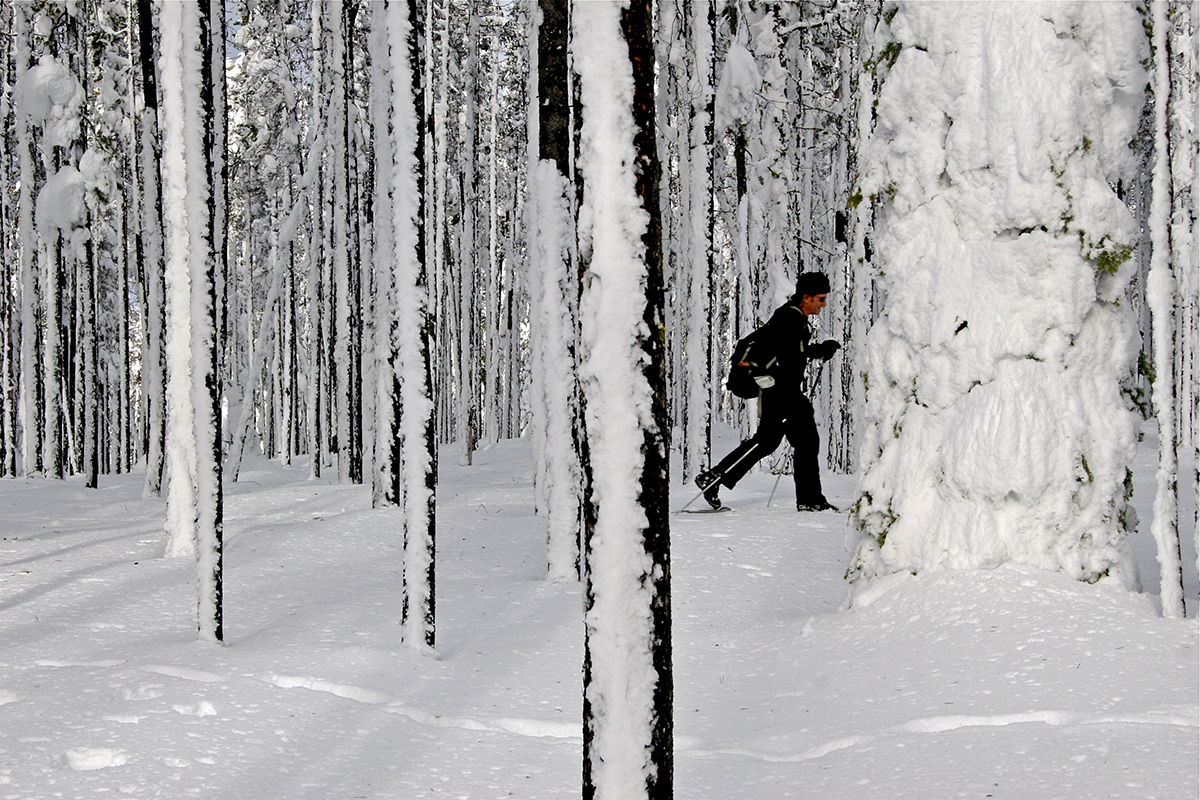
Rime Ice
How: Rime ice forms when cloud or fog droplets hit an object and freeze quickly from liquid to a solid state, often leaving a coating of icy snow on just one side of the object.
When: Cold weather combined with clouds or fog
Where: Ski lift towers, ridgeline trees (sometimes referred to as snow ghosts).
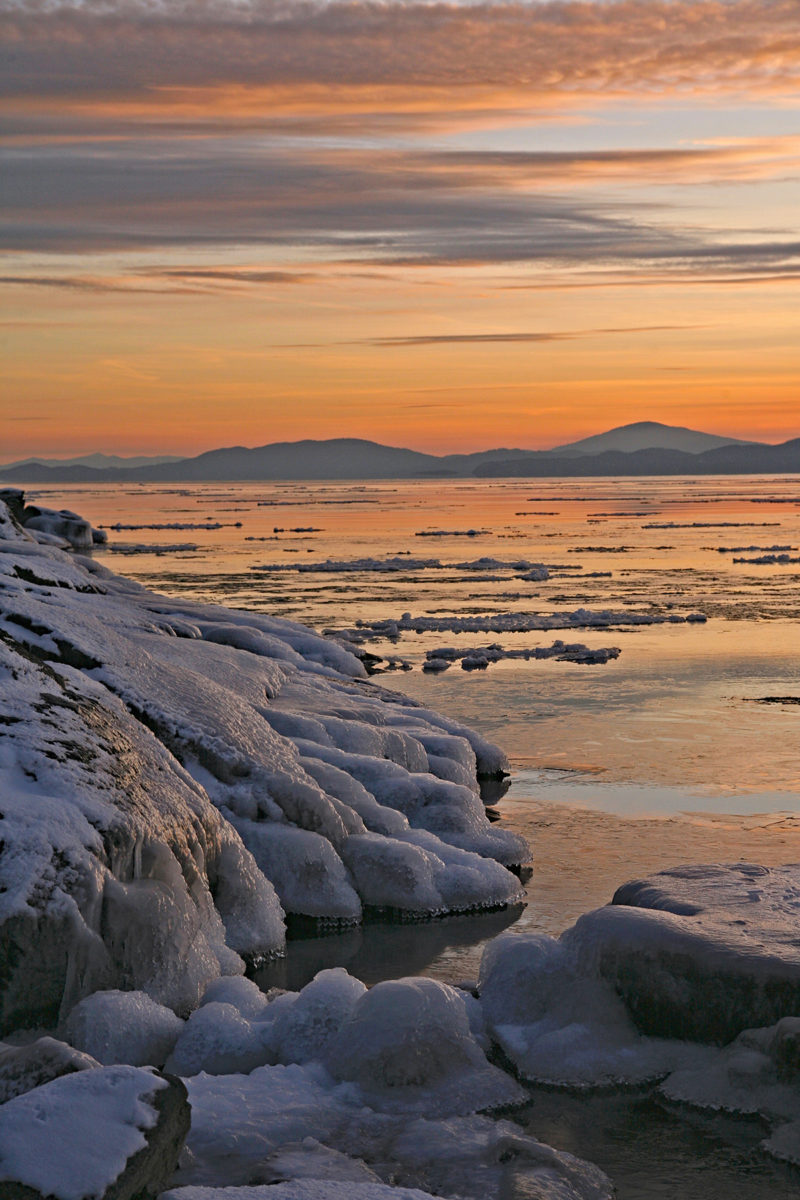
Glaze
How: When rain, drizzle or fog freezes on to an object forming a film of ice, that is dense, hard and transparent.
When: Above freezing temperatures followed by freezing weather.
Where: Black ice on a roadway, shoreline rocks and logs.
Hoarfrost
How: When a gas skips the liquid phase and turns directly to solid, occurring when the temperature of the object is lower than the frost point of the surrounding air. Normally composed of interlocking ice crystals, it is often feathery and delicate. It is called surface hoar when it occurs on the ground or in a lake.
When: On a clear, cold night producing the conditions for water vapor to sublimate – going directly from a gaseous state to solid-state.
Where: Wires, twigs, plant stems, and leaves.
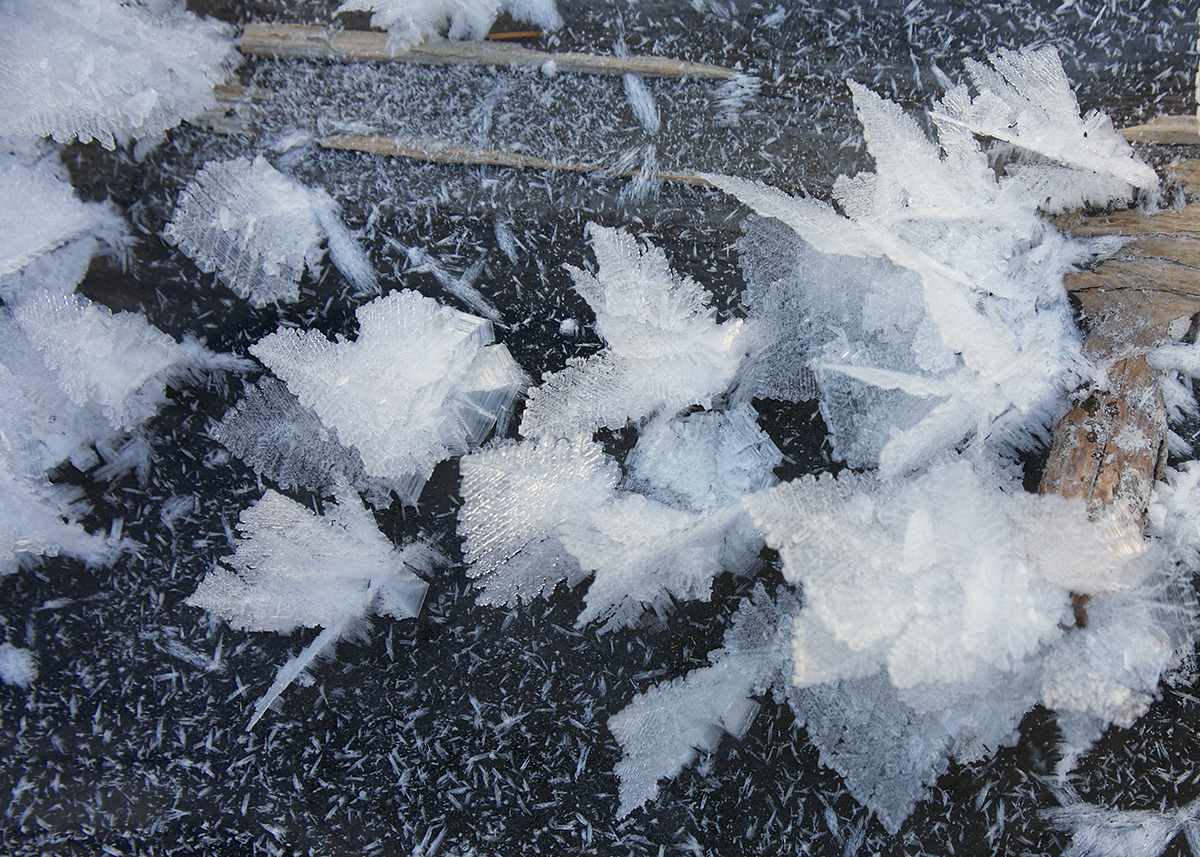
Frost Flower
How: These beautiful and delicate “flowers” are formed when a plant stem begins to freeze and expand and water vapor from the plant swirls into the air and forms into delicate petal-like structures.
When: After a cold snap when there is moisture in an object.
Where: Plants and snow surface.
Graupel
How: Tiny pellets of snow, that look like a miniature snowball are known as graupel. These pellets, also known as soft hail, are formed when supercooled water droplets freeze on to a snowflake.
When: Moisture in frigid air attaches to snowflakes.
Where: Widespread– just like snowfall.
Firn
How: A compacted snow that has been left over from other years that is considered the stage between snow and glacial ice.
When: After winter, a portion of that year’s snowfall remains
Where: Normally on top of a glacier
Ice Circles
How: It might look like something left by an extraterrestrial, but those circles of ice on lakes, ponds and rivers are formed when an eddy-like movement in the water causes the ice to rotate slowly, grinding off its rough edges when it bumped into other ice until it formed the shape of a circle. Pancake ice is similar to ice circles, but forms when ice is newly formed and more malleable and can be as much as 13 feet in diameter.
When: Occurs when one side of ice has water moving faster than the other side.
Where: The lily pad-like circles can be formed either on a bend in a river that causes a change in water speed causing the ice to rotate and become circular. It also happens when a chunk breaks off from an ice sheet in a place where water rotates.
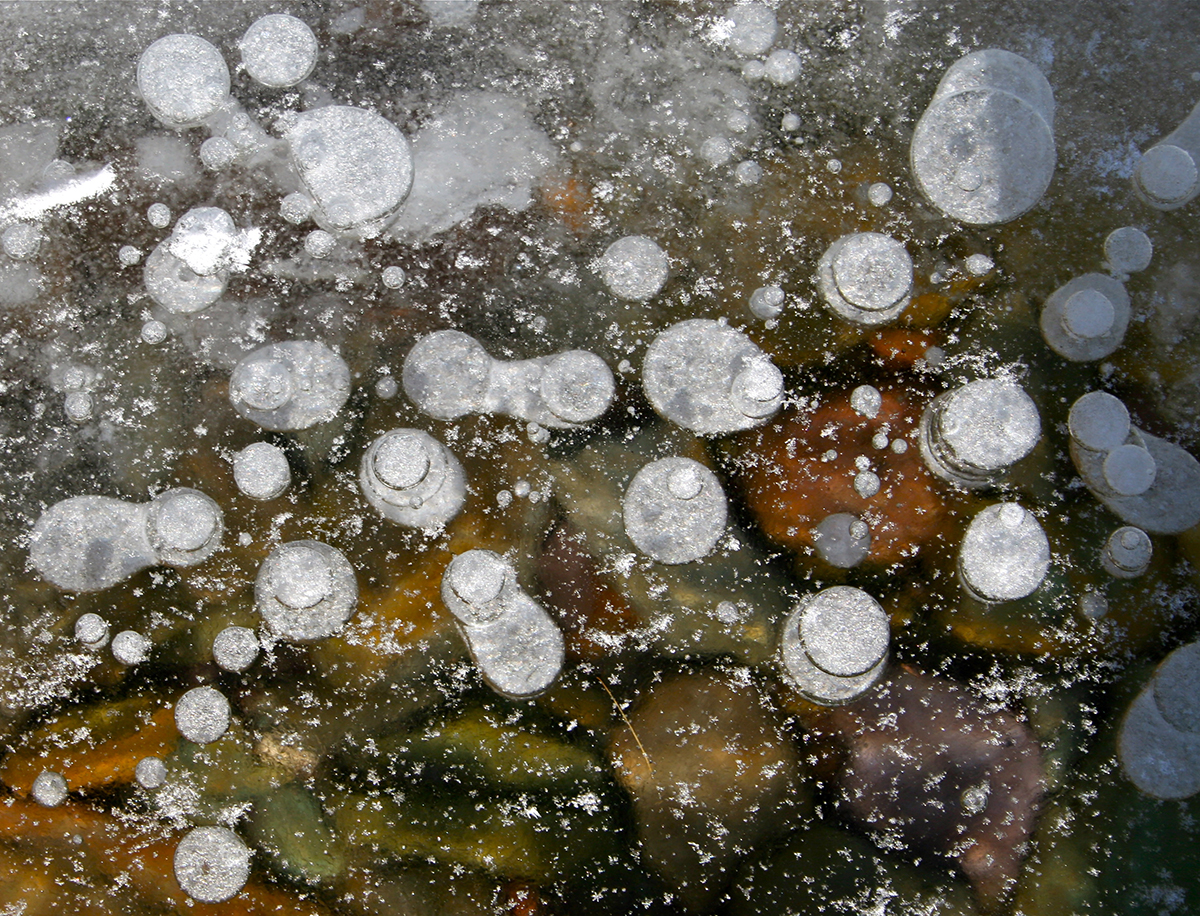
Ice Bubbles
How: Those polka dot-like circles in the ice are actually created by methane gas that rises to the surface when ice is forming. The gas is formed when dead organic matter from leaves and animals ends up in the bottom of the lake feeding bacteria, releasing methane gas, which freezes on the way to the surface. Those bubbles are also a warning to stay away because release of the gas tends to keep the ice thin.
When: There is organic matter in water under ice.
Where: Ponds, creeks and lakes.
Icicles
How: Dripping water freezes when hits colder air.
When: Forms when temperatures drop to below freezing.
Where: Places where there is water – roof run-off, waterfalls, objects along creeks, lakes and ponds.
Pressure Ridges
How: Form when ice warms and expands causing it to rupture and form a ridge in the ice, usually 2-4” thick.
When: After a cold spell as the ice warms and expands and either forms an overlapped or folded ridge.
Where: Near the shoreline of lakes, creating a weak area in lake ice that makes it hazardous to cross.

Snow Roller
How: A snow roller is created when there are two different layers of snow and just the right wind and temperature conditions. A snow roller occurs after a new snowfall on an old crusty snow, combined with some kind of trigger (including human) that causes snow to start rolling down an open hill. If the new snow is sticky enough it will literally snowball into something that looks like a cinnamon roll.
When: New sticky snow on old snow with a crusted surface combined with wind or snow falling out of trees.
Where: An open slope.
Clear ice
How: Glass-like ice can form during conditions that exist during cold, calm, snowless nights.
When: Occurs during the above conditions when ice is completely free of gas bubbles and debris.
Where: Ponds and lakes.
Snowflake
How: Snowflakes are formed when water vapor condenses (changes from gas to liquid) on a particle in a cloud, which begins the process of a slow-growing crystal in a six-sided shape.
When: Water vapor condenses on a particle.
Where: Form in a cloud.
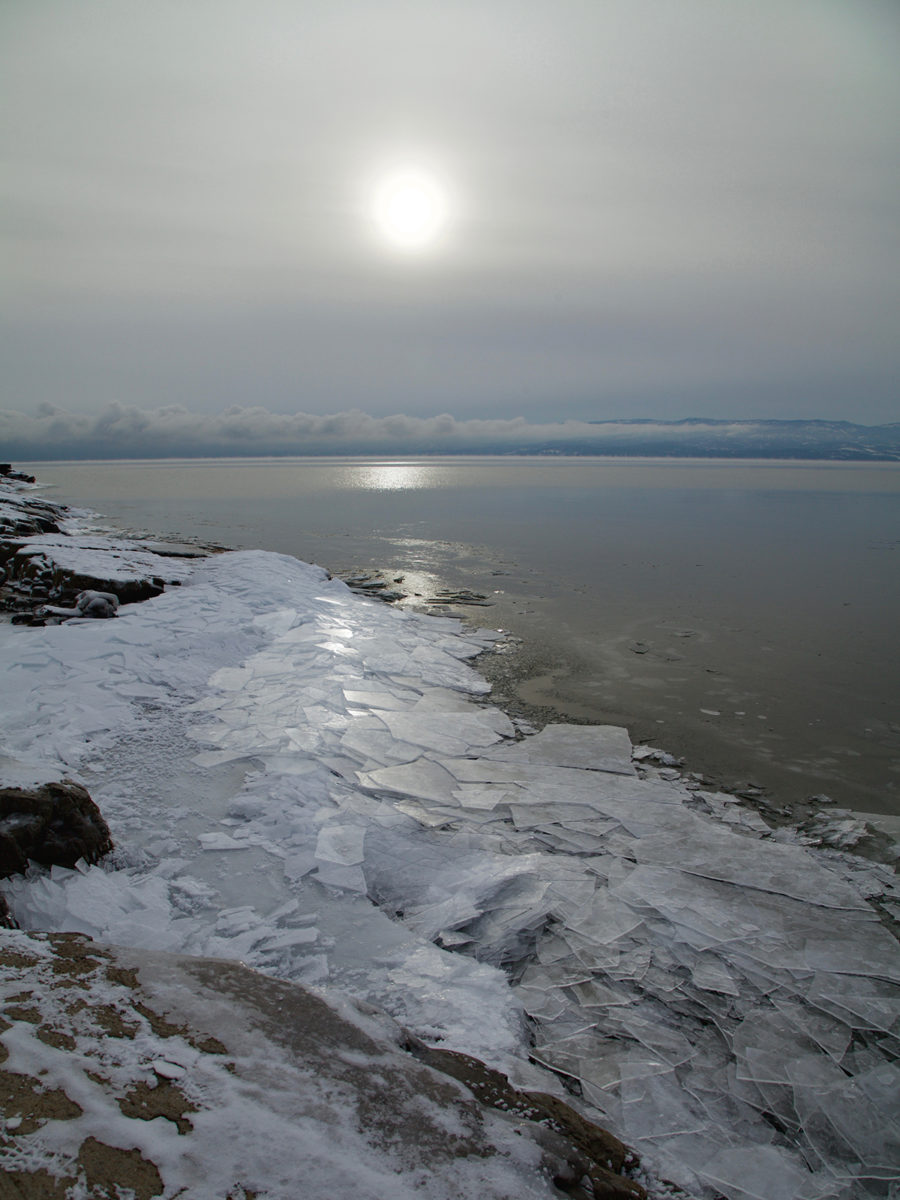
Ice Shoves
How: Strong winds and currents combined with temperature changes can cause ice to pile up on a lake.
When: They can occur any time ice forms on a body of water, but happen more often in late winter into mid-spring during ice breakup from melt and movement caused by winds or current.
Where: Lake shoreline.
Acoustic Dispersion
How: As ice expands and contracts it causes vibrations that create a spooky and thrilling ethereal thunder.
When: Acoustic dispersion occurs when higher frequencies of sound travels faster than the low ones.
Where: Frozen lakes.
